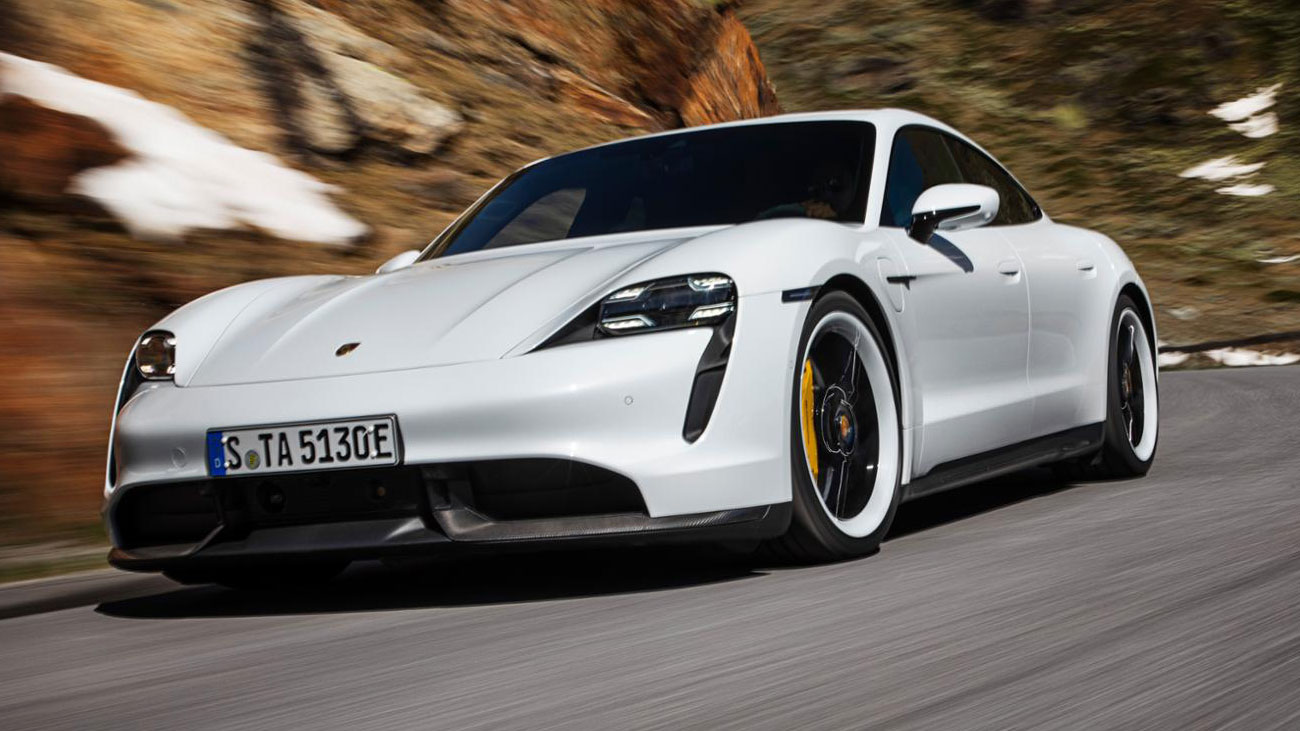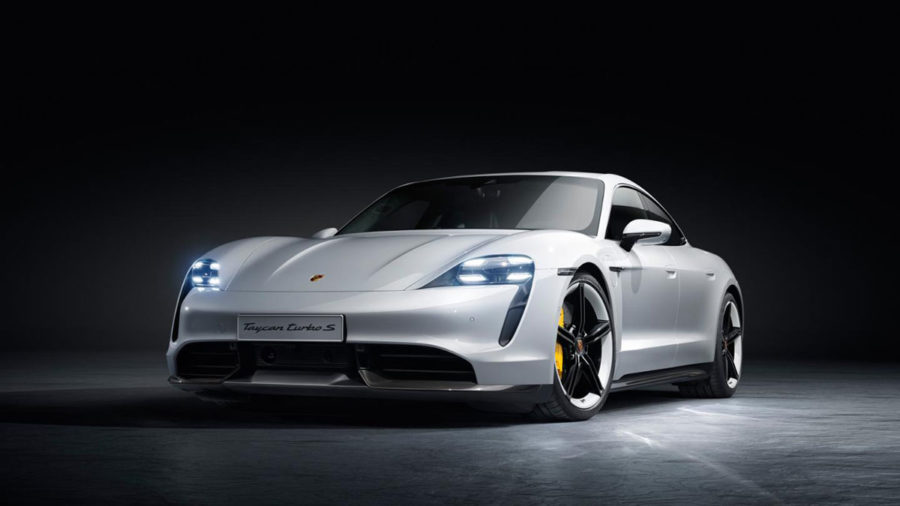The sheet and the camo decals are at last off the Porsche Taycan, the German manufacturer’s long-teased first leap into the growing electric vehicle market and a sincere challenge to Tesla’s popular, lightening–fast line of sedans. While priced far higher than most options in Elon Musk’s fleet—Taycan’s entry-level MSRP rests above $150,000 before tax incentives, more than twice that of a no-frills Model S—the performance, technology design, visual appeal, and heritage on offer balance out the proposition. It’s not hard to imagine that Porsche, which benefits from being under the umbrella of a far, far larger corporation, has now made looking at Tesla as a luxury car somewhat of a larger leap (at least until Elon Musk begins delivering his long-promised roadster in earnest).
From an engineering perspective, the Taycan certainly seems the product of the slide rule-loving wonks at Porsche: the developments and innovations here are so multifarious that it takes an expert to peel that particular onion. A 24-minute charge up, 236-280 mile range, 2.6-second 0-60mph, 616hp, and a 161mph top speed are some of the more attractive (and digestible) headline numbers from the base model Turbo (the $185,000 S model ups many of those digits). The Taycan’s 7:42 mark at Germany’s famed Nürburgring course (a record for a four-door EV) is nothing to scoff at either.
But none of this is surprising. Upon the first looks at Porsche’s Mission E concept back at the 2015 Frankfurt Auto Show, the promise of a market-ready EV coming out of Porsche’s labs included expectations of high-tech high performance. Considering the brand, it’s natural.
What is, at least from our perspective, somewhat of a surprise, is the beauty on offer here. Spy shots of the Taycan under camo suggested a form very similar to Tesla’s Model S that, while keeping with Porsche’s intensely guarded, almost never shifting aesthetic, seemed somewhat of a letdown—an automotive wet noodle from what should be a maker of inspiring cars.







